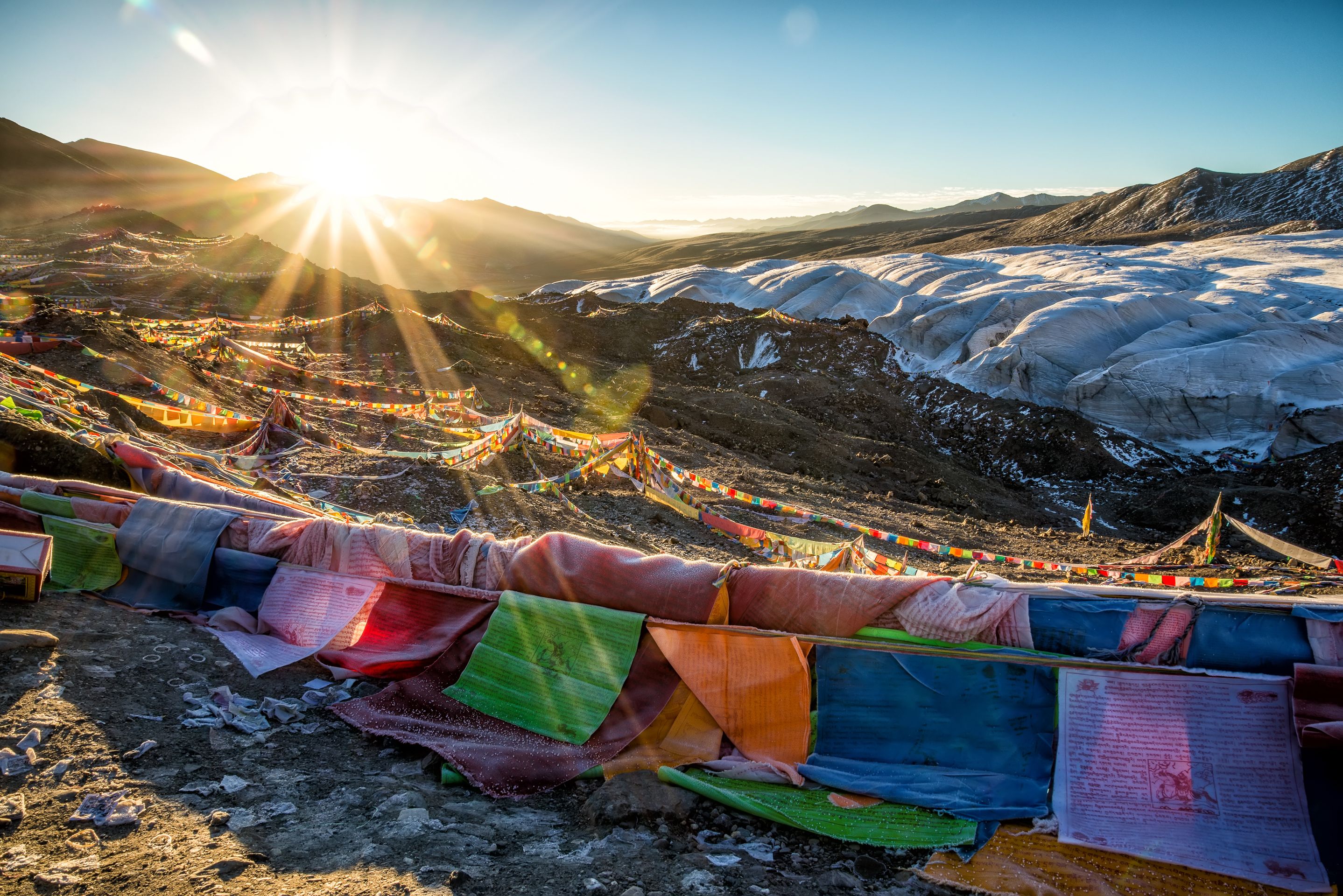For body and soul: About wild water, local drugs and disciplining monks
வெளியிடப்பட்டது: 31.03.2024
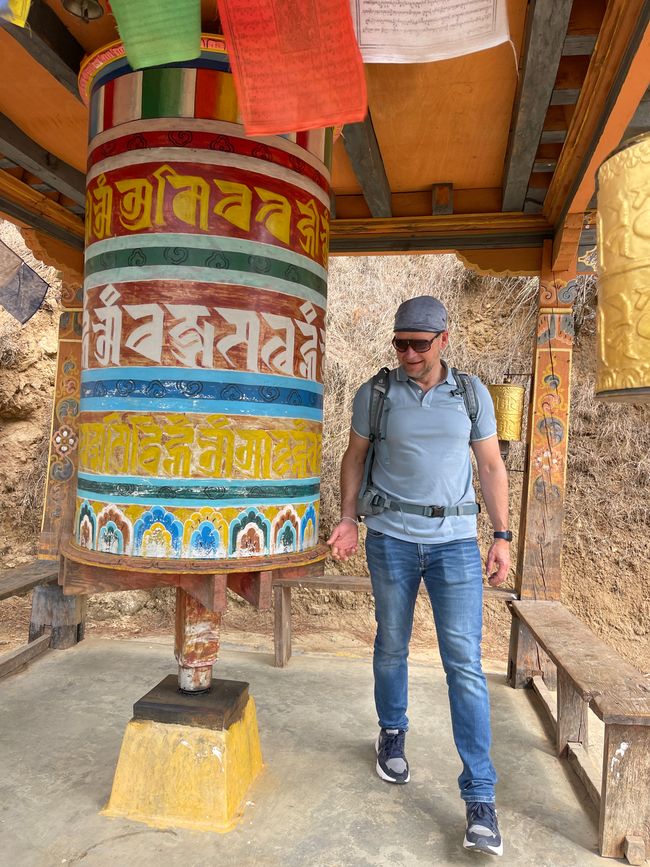

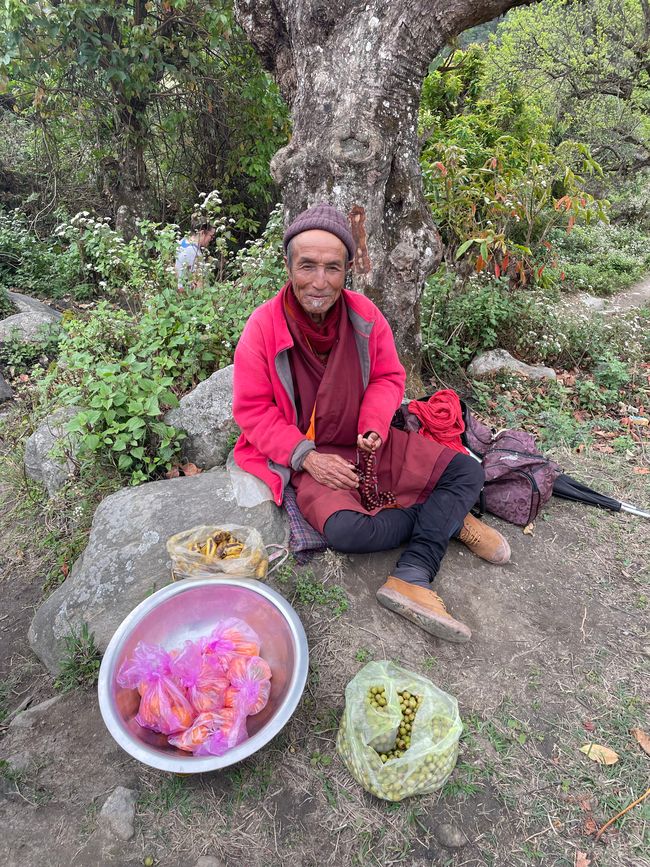

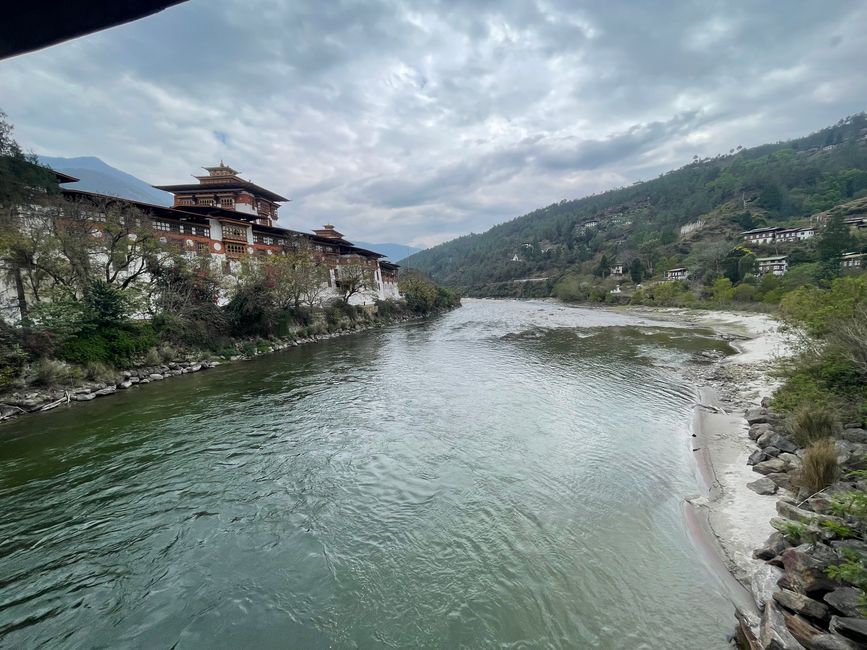
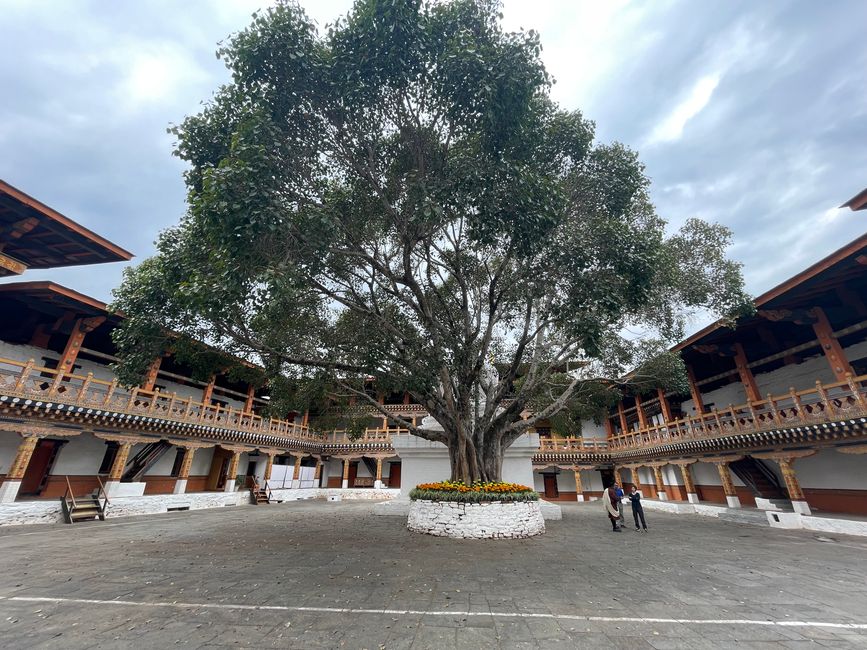
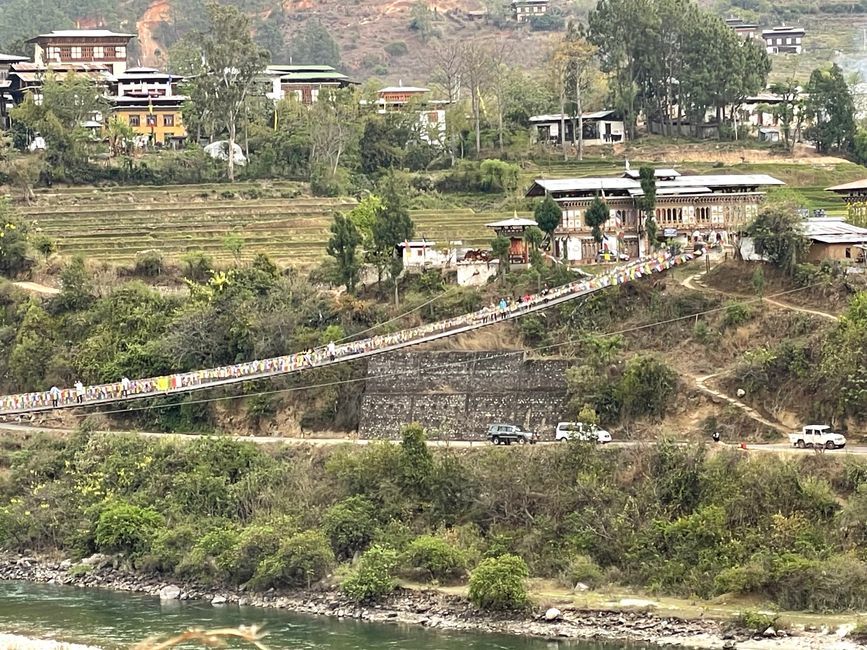
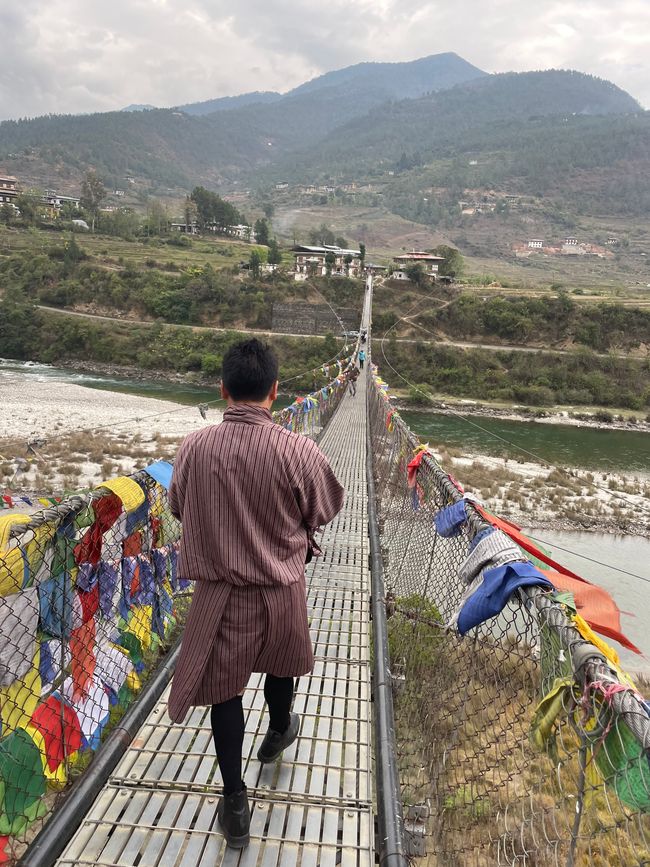
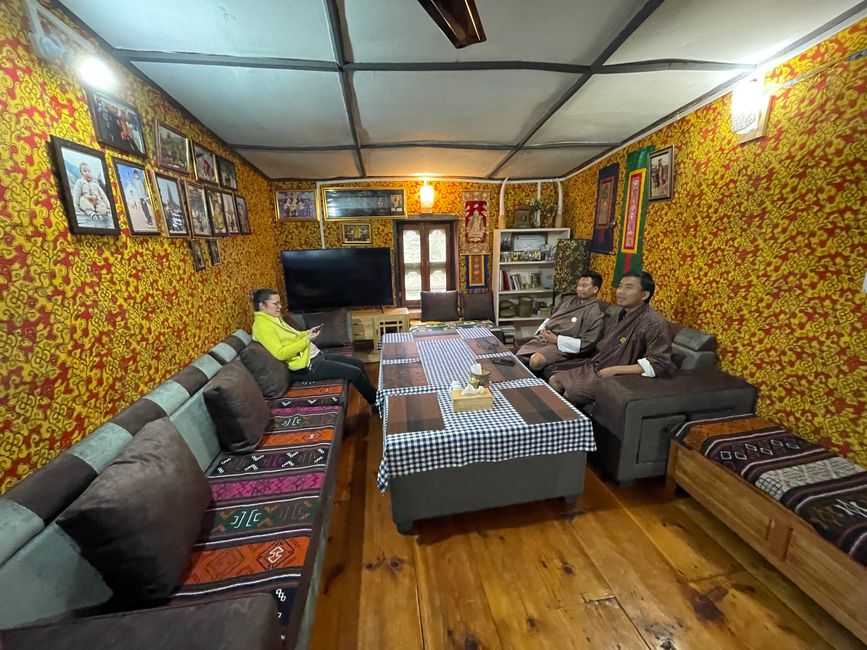
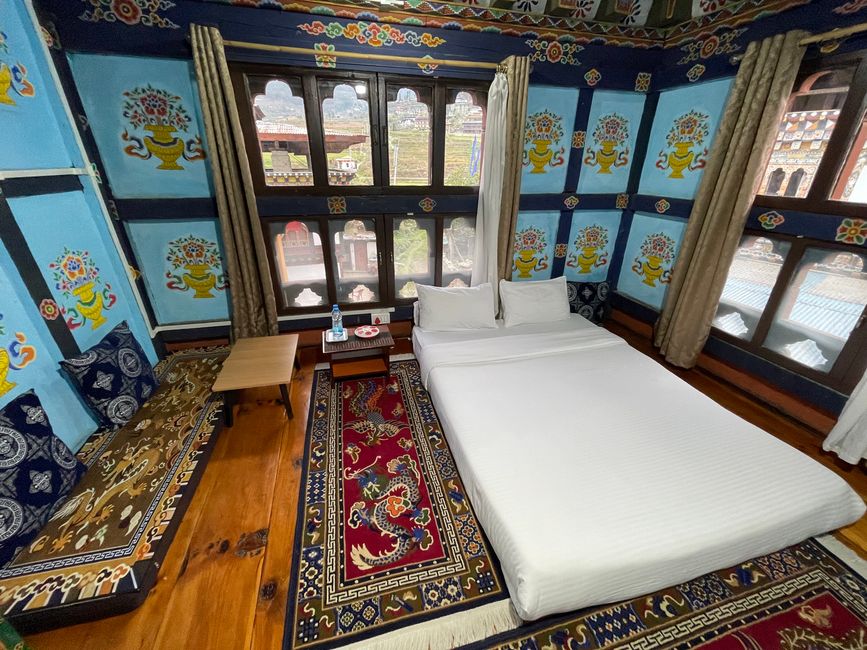
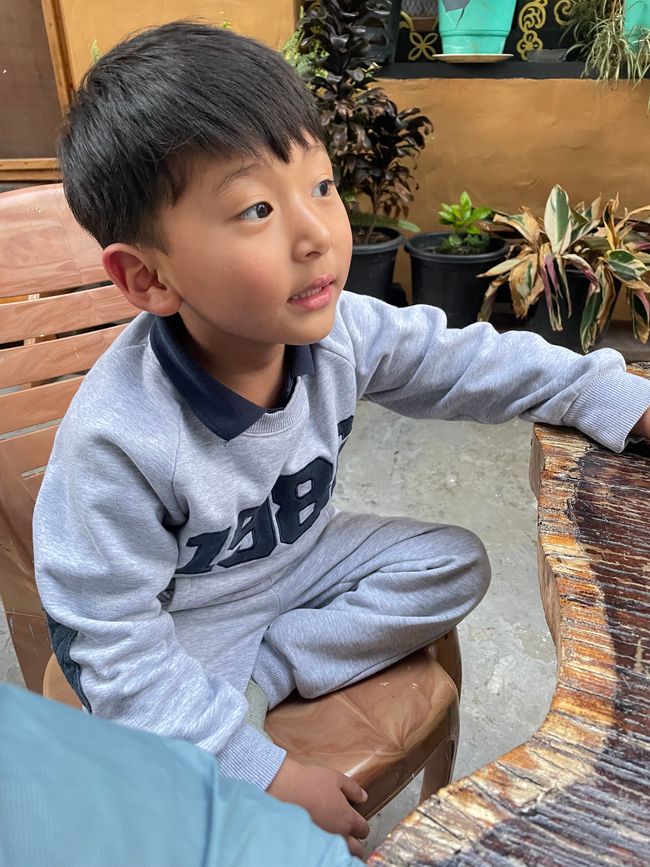

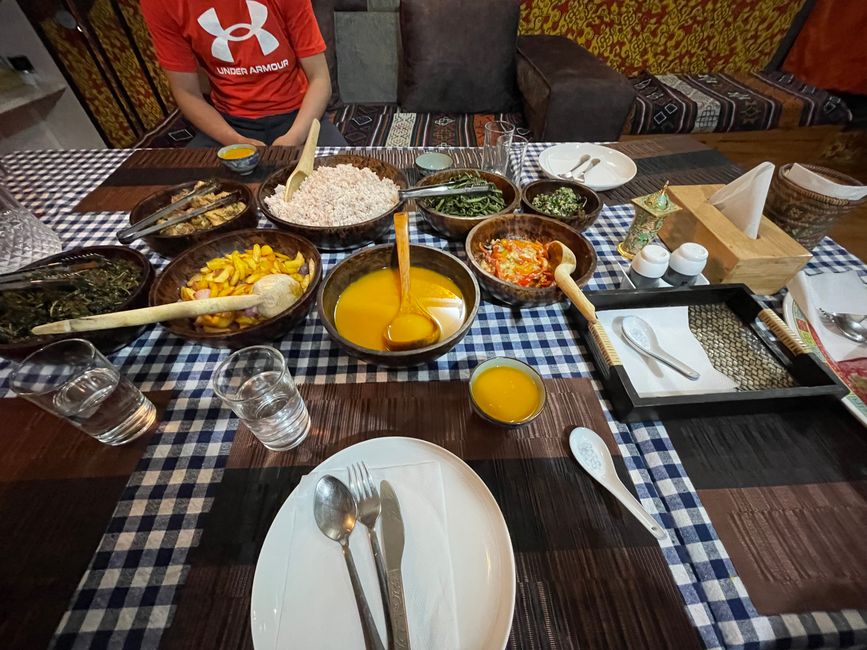
செய்திமடலுக்கு சந்தாதராகவும்
Hike to Chimi Lhakhang, the fertility temple
The path up to the fertility temple takes us through terraced terrain where we can watch busy farmers busily tending their vegetable fields. Chili is mostly grown in Punhaka and is served to us every evening in the form of chili cheese (extremely hot).
We attend Buddhist ceremonies in the three-story temple: monks playing music, others praying, and the subtle scent of incense sticks wafts through the colorful building. This spiritual atmosphere has a very moving effect on me and I would have liked to have just sat in the last row behind the monks without any further information from our guide in order to let this moment continue to have an effect on me.
A real balance to the many quiet and thoughtful moments is the subsequent rafting tour on the Pho Chhu, after which we get out of the boat after about an hour, soaked and full of adrenaline.
On the journey to Phunaka Dzong, the temple of great happiness, I talk to Sengye about fundamental questions of our existence. He is obviously pleased with my interest and gives me insights into the Buddhist teachings of rebirth. He explains the Wheel of Life to me in basic terms and tells me about the three poisons: Aversion (aggression, anger, hatred), Desire (greed) and Ignorance (ignorance), which you should overcome as a human being and not want to be reborn as an animal (mosquito). In short, the ego must be overcome (which also means, for example, not consuming meat). When it comes to overcoming the three poisons, I fully agree with him, but when it comes to his statements about the reincarnation cycle, as a Christian (and meat-eating) person, I am still skeptical. Nevertheless, the conversation with him touched me very much and I look forward to continuing it the following day when he would like to explain the Wheel of Life to us in more detail.
Punakha Dzong, the palace of bliss
In the afternoon we visit the second largest monastery castle in Buthan, where we receive a lot of information about the history of the country. What was particularly impressive for me was the visit to the monastery in the Dzong, where we had the opportunity to watch the monks praying. It cannot be overlooked how disciplined they are in pursuing their calling and spending hours in prayer. They are only occasionally given water and vegetables in small bowls. If the supervisor and higher-ranking monk notices that one of the praying people is threatening to fall asleep or is becoming quieter in prayer, he chastises him with blows on the back using his cloth cord.
Following our visit to the palace, we cross Bhutan's longest suspension bridge on foot, a truly shaky experience.
Visiting locals
Today we spend the night in a homestay with a local family and spend the afternoon with the local butter tea, which is made from fermented yak milk, water and salt (and to which rice is roasted to taste). Afterwards we can help prepare dinner and receive an introduction to the preparation of typical local dishes. I notice our host's grandma, who is sitting on the floor cutting vegetables, and her friend wrapping something in leaves and then chewing it. Apparently they notice my interested look and offer me a bitternut. Bitternut is the fruit of the Areca palm and is wrapped in its leaves and chewed. It acts like a stimulant drug and has an effect familiar to me from the use of other stimulants in my youth. “Forever young” I would say :-)
In the evening we treat ourselves to a bottle of rice liqueur with Sengye and our driver and fall into bed exhausted but satisfied. What a day!
செய்திமடலுக்கு சந்தாதராகவும்
பதில் (1)
B.W.
Fantastische Aussagen und Gedanken !